- Latin America is astoundingly biologically diverse, while its enforcement of wildlife trading laws is extremely weak, creating the perfect market for traffickers.
- Traffickers sell the majority of animals domestically, though there is a huge international market with a high demand for birds, fish, monkeys and more — the rarer the animal, the higher the asking price, and bigger the profit.
- The legal trade often provides cover for illegal trafficking, with large numbers of wild-caught animals laundered by legally sanctioned captive breeders.
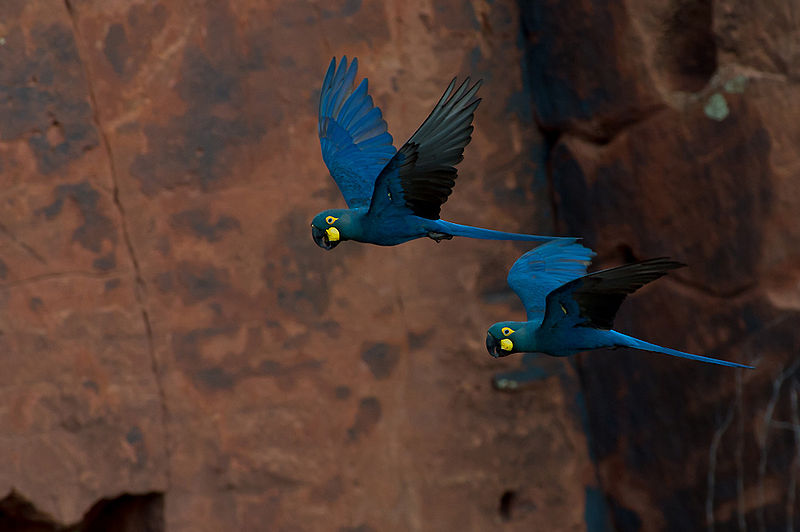
With its spectacularly diverse ecosystems, rare and endemic species, remote terrain, often loophole-riddled laws, and sketchy enforcement, Latin America is a haven for a booming illegal wildlife trade.
South and Central America’s diversity is a magnet for wildlife traffickers dealing in the rare and unusual. Brazil alone holds 15-20 percent of the planet’s biological diversity and reportedly supplies 5-15 percent of the global illegal wildlife trade.
What is most notable about this unlawful trade is the range of species involved. Birds — particularly parrots, macaws and songbirds — are among the most trafficked. Reptiles, including iguanas and snakes are popular in the pet trade. Turtles are harvested for their eggs, meat, and shells; caimans for their skins.
Also striking is the immense volume and high prices obtained for illegally taken seafood delicacies — ranging from shark fins, totoaba swim bladders, sea cucumbers, and queen conch meat. A remarkable variety of other animals are also trafficked, including jaguars, armadillos, monkeys, frogs, scorpions and spiders.

The breadth and complexity of the black market trade in wildlife complicates analysis of both its scale and scope. Assessments that exist tend to focus on a single country of origin, destination, class of animal, or some combination thereof.
Despite this lack of comprehensive data, a survey of media reports on cases in South and Central America and the Caribbean provides insights into, and some measure of, the trade’s alarming dimensions.
A thriving domestic and international bird market
Birds are among the most numerous animals found on Latin America’s black market. In Brazil, about 80 percent of trafficked animals are birds. Top targets are the psittaciformes (parrots and macaws), collected for their colorful plumage, and the passerines (perching birds), targeted for their musical songs. While there is a market for bird feathers and other bird parts, the vast majority of the illegal bird trade is in live animals for pets.
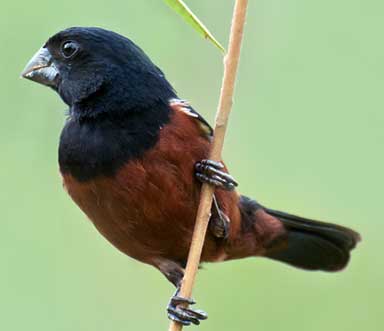
There is a long tradition in many Latin American countries, such as Brazil, Peru, Ecuador and Mexico, of citizens keeping birds as pets. “It is an ancient culture,” notes Brazilian journalist Dimas Marques. “They’re called xerimbabos, which means “dear thing” in the Indian Tupi language.”
This high domestic demand fuels a large portion of Latin America’s illegal pet trade today. In Brazil, says Marques, “it is estimated that 60 percent of the illegally captured animals supply the home market.”
Defenders of Wildlife, in a 2007 study on the illegal bird trade in Mexico, found that about 90 percent of the 65,000-78,500 parrots that were illegally trapped in Mexico every year were destined for the domestic market. Similarly, BirdLife International reports that 94 percent of the 22,000+ parrots found every year in the local pet markets of Santa Cruz, Bolivia are wild-caught, and thus illegally traded under national law.
Foreign markets are significant too, with Europe and the United States top destinations. Up to 9,400 birds, or 4-14 percent of Mexican wild-captured parrots, are smuggled out of the country into the U.S. each year.

In a multi-year investigation in the Czech Republic, Operation Lora, focused on the illegal smuggling of rare birds, such as Lear’s and Hyacinth macaws, from Brazil. They uncovered several smuggling networks, including one that had operated across five Brazilian states for a decade.
Songbirds, such as finches, are often illegally traded in both the domestic and international markets. They are especially valued for singing competitions held in many Latin American countries, including Guyana, Suriname and Brazil. As with horseracing, participants make money by picking winners — the birds singing the most and best songs — while “owners” earn cash from the sale of winning birds.
These extraordinary songsters are equally valued by international connoisseurs. Wild-caught finches from Guyana might sell for $5 in local markets, but yield $500-$10,000 in the U.S. depending on an individual bird’s singing prowess, according to the New York Times.
The U.S. Fish and Wildlife Service has arrested traffickers in several finch smuggling cases. One New York man was caught three times in the United States and once in Guyana with hidden finches. Another bust involved a Guyanese immigrant caught smuggling 13 chestnut-bellied seed finches hidden inside plastic hair curlers, and yet another involved an elderly man traveling from Cuba with 16 Cuban bullfinches sewn into his pants.
The bird trafficking shell game
One of the first major steps needed to reduce Latin American trafficking in birds and other species, is a toughening and tightening of laws in the countries of origin.
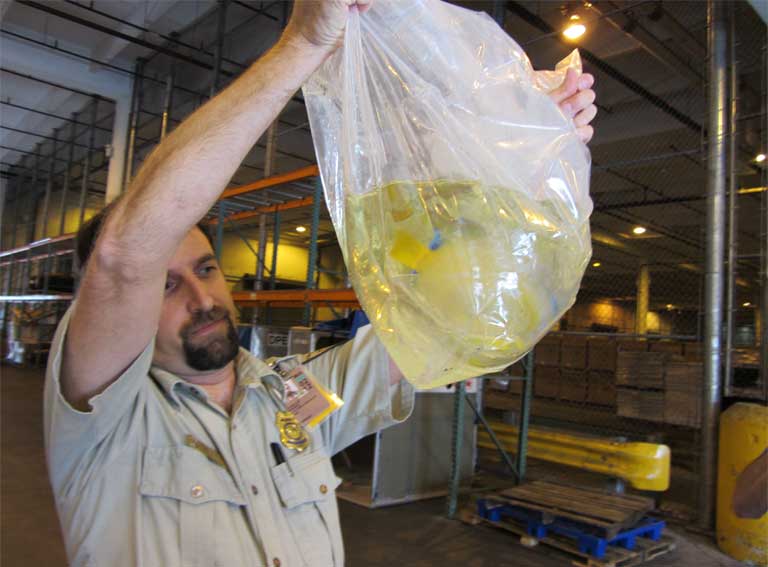
In Brazil, for example, national laws ban unauthorized trade in wild animals, but it is legal to possess birds and other wildlife if they are bred in captivity. Obviously, enforcers find it virtually impossible to know whether a particular animal was captured in the wild or bred in captivity. It is a legal loophole a wildlife trafficker can drive a truck full of parakeets through, and as a result, there are over 1,000 captive breeders in the country — most are poorly regulated and policed.
Traffickers and breeders often falsify permits and trade documents, or add illegal birds to legal shipments, or pass off an illegal species for one that is legal. In Operation Lora, for instance, authorities found that hyacinth macaws (Anodorhynchus hyacinthinus), with no allowed international trade, were misrepresented as blue-and-yellow macaws, (Ara ararauna), listed on CITES Appendix II, which allows trade with a permit.
“What we see is that the same species that are legal to have [in your possession] are also the major species that are illegally captured,” explains Carlos Abreu, analyst with Brazil’s national environment agency, IBAMA. “They capture the animal and try to make it look like [it was bred] in captivity. So we realized that the legal trade feeds the illegal markets.”
The impact of the illegal bird trade on Latin American avian populations and ecosystems is devastating, and senseless, especially because up to 90 percent die in transit. Still, the exorbitant profits made by traffickers on the surviving 10 percent is worth the risk of fines and incarceration. Trafficking is now perhaps the second-biggest threat facing parrots in the wild, with only habitat loss rating higher, says Juan Carlos Cantu, Director of Defenders of Wildlife’s Mexico office.
Shark finning a serious threat
Every year, 73 million sharks die to supply the global market for shark fin soup, a delicacy served at Chinese weddings and banquets as a symbol of status and wealth. A single bowl can cost upwards of $100, spurring demand and leading to a decline in some shark populations by up to 98 percent.
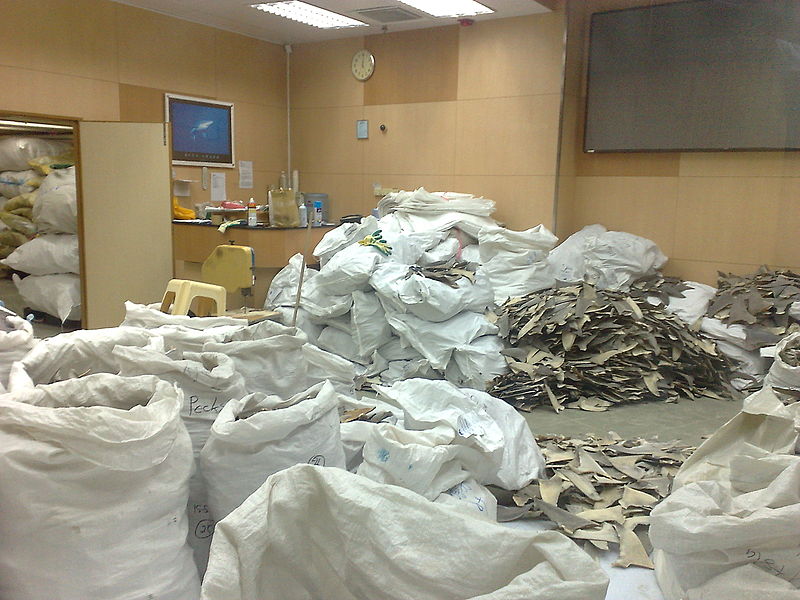
Trade in sharks can be legal in Latin America, depending on country, species and a number of technicalities. For example, Argentina, Brazil, Chile, Colombia, Costa Rica, Ecuador, El Salvador, Honduras, Mexico, Nicaragua, Panama and Venezuela, allow commercial sales of shark but restrict or ban shark finning (the removal of fins).
Of course, policing such a distinction is problematic, and there are often mixed signals as to what is legal or illegal. In March 2015, the government of Costa Rica sparked outrage after it authorized the export of 900 kilos of hammerhead shark fins to Hong Kong.
Despite a variety of national restrictions, shark finning remains an industrial scale problem. In mid-October 2015, Mexican authorities seized 3.5 tons of dried shark fin, and in May 2015, Ecuadorian police seized 200,000 shark fins in the port city of Manta.
In Costa Rica, authorities seized 158 kilograms of shark fin in July 2015, 153 illegal shark fins in 2014, 120 in 2012 and 650 in 2011. In the 2011 case, the fins were still attached to the animal’s spine in a practice known as “shark spining” that aims to circumvent the law, which requires fins to arrive “naturally attached” to the sharks’ bodies. It worked. In April 2014, a judge ruled that shark spining was legal and ordered the government to reimburse the ship captain for the confiscated fins.
Costa Rica is not the only country caught in the contradiction of its own hazy laws. Ecuador, for example, has a loophole in the law that allows “incidental” catch of sharks, leaving enforcers with the virtually impossible task of differentiating between intentionally caught sharks and those netted as bycatch.
Sea cucumber populations crash
Sea cucumbers, tubular creatures with leathery skin, found in coastal Latin America, are also considered a culinary delicacy in China, where they can sell for $300 per pound.
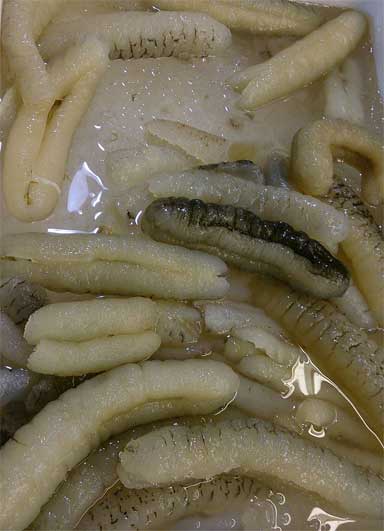
As with shark fins, illegal trade in sea cucumbers has become a massive business. In June 2015, Ecuadorian authorities seized 10,852 sea cucumbers (262.8 kilograms or 578 pounds) at the San Cristóbal airport. That same month, Mexican federal police seized an illegal shipment of 17 tons of sea cucumbers at the Cancún International Airport, and in July 2013, they confiscated five tons in southern Mexico.
Drug cartels have moved into the business, with Mexico News Daily reporting that high profits for sea cucumbers led to pitched battles between rival gangs in Yucatán and Campeche in September 2014. Other Mexican media reported on a well-planned robbery, where ten armed men attacked three armed guards and stole 3.5 tons of dehydrated sea cucumber in El Cuyo on the Yucatán peninsula in April 2015.
Sea cucumber numbers have plummeted across Latin America, with the fisheries depleted on Ecuador’s mainland coast and in the Galapagos Islands, and highly impacted in Mexico.
Totoaba on the ropes
Mexican drug cartels are reportedly deeply involved in the illegal totoaba market, the trafficking of an endangered fish endemic to the Gulf of California, or the Sea of Cortez, lying between the Baja Peninsula and Mexico’s mainland. Totoaba is valued for its swim bladders, used to make a specialty soup, and individual fish can be sold for $10,000 to $20,000 apiece in the Asian market.

Totoaba smuggling is a high-stakes game. In June 2014, drug boss Samuel Gallardo Castro was murdered, reportedly because he owed $1 million for a shipment of totoaba fish bladders. Castro was the leader of a Mexican organized crime group in the Sonoran town of El Golfo de Santa Clara.
Fishing for totoaba is illegal in Mexico, and the species is listed under CITES Appendix I, which bans international trade. But smuggling persists for what Britain’s Daily Mail calls “aquatic cocaine”. In 2013, Mexican regulators seized illegal totoaba bladders worth $2.25 million.
In 2013, US border inspectors in Calexico seized 483 pounds of totoaba, representing the swim bladders of over 500 endangered fish, and charged seven people in separate cases. And in July 2015, U.S. Customs and Border Protection (CBP) officers in Puerto Rico seized 1328 pounds (602 kilograms) of totoaba fish bladders inside 9 courier parcels delivered from Venezuela, destined for Hong Kong.
The illegal trade in totoaba also does collateral damage: it harms the critically endangered vaquita, a small porpoise species of which less than 200 individuals remain, also endemic to the Gulf of California. Vaquita are not targeted by totoaba smugglers, but are bycatch; they drown in totoaba fishing nets.

Queen conch on the decline
There is a legal Latin American trade in queen conch (Lobatus gigas), a giant sea snail valued for its meat and shell. But depleted conch stocks have resulted in a plethora of legal restrictions among Caribbean nations, which smugglers circumvent.
According to a Defenders of Wildlife analysis, queen conch is the top illegally traded item from Latin America to reach the United States, comprising 18 percent of illegal shipments seized by U.S. authorities. (All taking of queen conch is prohibited in Florida and adjacent Federal waters).
International demand drives Caribbean trafficking: almost 80 percent of all conch meat is imported by the U.S., with much of the rest going to France. Florida’s Sun Sentinel newspaper reports that smugglers buy conch on the black market at $4 per pound in the Bahamas and sell it to local restaurants for $16 per pound — a hefty profit margin that assures continued black market trading.
Reptiles in trouble
Latin America is a frequent source of reptiles for both the pet and skin trades. Much of that trade is legal and destined for the United States. From 2004 to 2009, the U.S. legally imported 8.3 million wild reptiles from around the world. El Salvador and Colombia ranked in the top 10 exporting countries.
However, a large portion of the reptile trade is illicit: in October 2015 Defenders of Wildlife issued a report, Combating Wildlife Trafficking from Latin America to the United States, which found that four of the five most frequently seized animals or animal products in U.S. illegal shipments were reptiles — including sea turtle parts (15 percent), caimans (9 percent), crocodiles (9 percent), and iguanas (9 percent).

Brazil has a booming domestic reptiles market. A variety of venomous snakes are valued in the home cure biomedical market. Illegal trade is a major threat for some species, such as the golden lancehead (Bothrops insularis), which is critically endangered and endemic to Queimada Grande Island off the coast of Brazil’s state of Sao Paulo; it’s a species that can fetch up to $30,000 on the black market.
Breeders and traders in the pet trade especially covet unusual reptiles able to propagate uniquely-colored descendants, or morphs. Brazil’s Operation Lucy undertook a multi-year investigation into the theft of a wild-caught one-of-a-kind leucistic boa, called Princess Diamond, smuggled from Brazil by an American collector, Jeremy Stone; he bred the snake and sold its progeny. After Stone pled guilty in July 2014, he claimed the snake had died but forfeited its offspring, which were repatriated to Brazil.
As with Princess Diamond, live animals are often advertised over the Internet. In 2011, Brazilian authorities in Operation Arapongas dismantled an Internet animal smuggling ring operating in seven Brazilian states. They seized 2,631 wild animals that had been for sale online, including alligators, snakes and lizards.
Many traffickers who are caught are repeat offenders. For example, in July 2012, Galapagos National Park officials found four Galapagos land iguanas in the luggage of a German national, who had been prosecuted earlier for smuggling a critically endangered Fiji crested iguana.
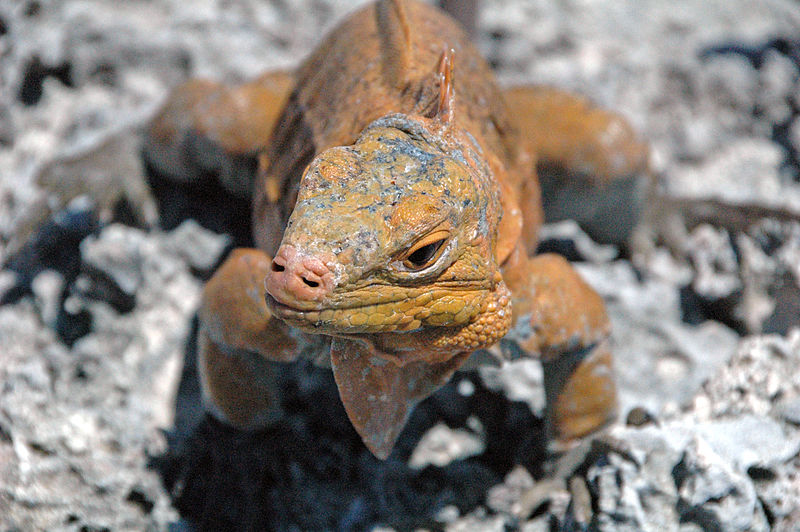
Similarly, in September 2015, Ecuadorian authorities stopped a Mexican man, Gustavo Eduardo Toledo-Albarran, smuggling nine marine iguanas and two land iguanas in his luggage from the Galapagos island of Santa Cruz. It was not his first arrest. In 2010, he and his accomplices, Thomas Price from Switzerland, and Manfred Walter Bachmann, a German national living in Uganda, were jailed for smuggling 16 jeweled geckos from New Zealand.
The rarer the animal, the more it seems to be desired, and the higher price it can demand. British authorities, for example, seized 13 critically endangered San Salvador rock iguanas from the Bahamas at Heathrow Airport in February 2014 — a species so rare that only a few hundred are thought to still exist. The iguanas were stuffed in socks. The authorities returned the reptiles to the Bahamas.
There is a large legal and illegal trade in Latin American caimans, which are sold as skins to the fashion industry. According to a UN report, about 50 percent of the 1.2 million legally traded crocodilian skins (which might be wild harvested, captive bred or ranched) come from South and Central American species.
As with so many other animals, the legal trade often serves as cover for illegal trafficking. Bolivia has a sizable legal trade, with ranches such as Crocoland. While Crocoland was initially allocated 2,000 wild-caught animals for captive breeding, it continues to take animals from the wild to increase its production above its captive-bred stock, according to Altotero. In April 2013, Bolivian police seized 5,000 baby caimans and 500 skins at a checkpoint in Pailas, in the department of Santa Cruz.
The number of caimans illegally taken from the wild is significant. According to the First National Report on the Traffic of Wild Animals by RENCTAS, a Brazilian NGO, one million caimans are illegally captured every year in the Pantanal and thousands more in the Amazon. Skins are often taken to neighboring countries where they are processed and shipped out with false documentation.
Turtles rank high with traffickers, probably because they are desirable for a multitude of reasons, including their eggs, meat, leather, and shells, as well as for pets.
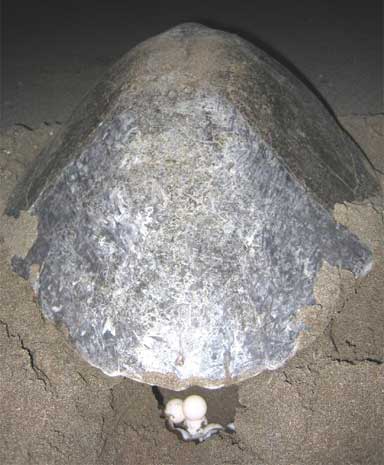
In Operation Central, a multi-year investigation by the U.S. Fish and Wildlife Service, agents disrupted four sea turtle smuggling rings — two based in Mexico and two in China. Together with Mexican authorities, authorities uncovered the smuggling of 25 separate shipments that included 700 tanned skins of sea turtle, caiman, python and other protected species, and well over 100 wildlife items, such as sea turtle leather boots, belts and wallets.
With respect to eggs, Costa Rica is a prime trafficking target because its beaches are favored nesting spots for leatherbacks and other sea turtles. Unfortunately, the same characteristics that attract the breeding reptilians — isolation and lack of light — also attract poachers who dig up nests at night and sell the eggs.
Local volunteers monitor many turtle nesting beaches, but these patrols can be deadly. In May 2013, poachers led by Nicaraguan Felipe “Renco” Arauz, a drug trafficking criminal, murdered 26-year-old Costa Rican conservationist Jairo Mora Sandoval, who tried to protect the turtle nests. The murder shut down turtle monitoring and exposed what author Scott Wallace called “a growing overlap between animal poaching and drug trafficking on the country’s Caribbean coast.”
Both poaching and the threat of violence persist. From March to May 2014, Costa Rican police confiscated more than 2,000 turtle eggs, and in June 2015, eleven Sea Shepherd Conservation Society volunteers were attacked by poachers while patrolling Costa Rica’s Pacuare Beach.
A wildlife trafficking epidemic
While the true scope and scale of the South and Central American wildlife trade is unknown, evidence suggests it is large, and getting bigger — fast. Brazilian NGO RENCTAS, the Brazilian Network to Fight the Trafficking of Wild Animals, estimated in its 2001 report that animal trafficking takes some 38 million specimens from nature each year in Brazil alone. In Peru, 400 different species of fauna and flora are illegally traded. In Colombia, 58,000 trafficked animals are seized annually, and thousands of animals have been rescued in Bolivia, Brazil, and Paraguay, among other nations.

Trafficking appears to be a lucrative, rapidly growing business: in Mexico, for example, just 2,700 animals were confiscated in 2012; that number rose to over 480,000 rescued animals in 2014. The swelling numbers of “rescued” animals creates thorny problems for conservationists — housing, treating, and repatriating often sick or injured animals to the wild is a challenge that few developing countries can easily afford, and there are currently few NGOs able to step into the role.
What becomes crystal clear as one surveys the burgeoning illegal trade is that environmental crime needs to be taken more seriously by Latin American countries of origin, and destination countries such as China. Legal loopholes that benefit traffickers must be closed, and enforcement needs to be better funded. It is also clear that far more work is needed to assess the scope and scale of the illegal trade in order to focus attention and resources squarely on meeting the challenge.
